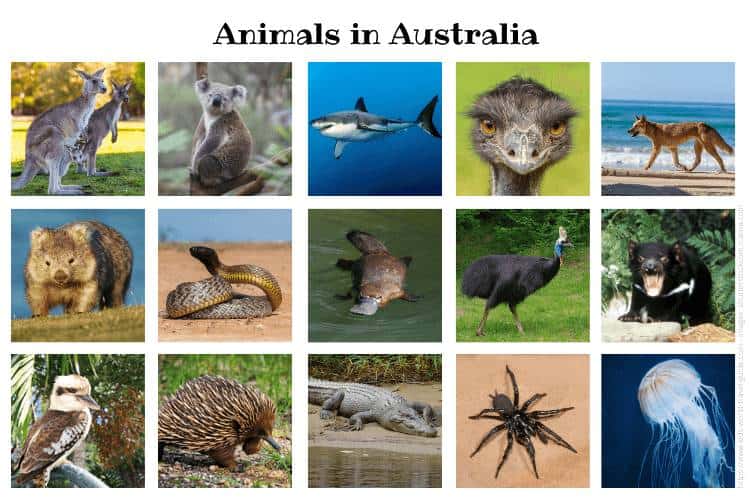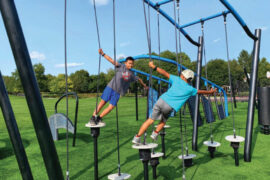Welcome to the Wonderful World of Australian Animals!
G’day, parents! Are you ready to hop into a fascinating journey through the land down under with your little joeys? Australia’s array of creatures is as unique and wondrous as the continent itself. From cuddly koalas to the bouncing kangaroos, your family is in for an exciting educational adventure. This guide will provide you with the must-know facts about Australian animals, safety tips, and fun activities to engage your children’s curiosity.
Meet the Marsupials: Unique Mammals of Australia
Let’s start with a group of animals that truly sets Australia apart – the marsupials. Parents often find that kids are immediately drawn to these pouched wonders.
- Kangaroos – These iconic Aussie animals are not just great boxers but also incredible jumpers. Learn about their habitat, diet, and why they are skilled at moving around.
- Koalas – No, they’re not bears! Dive into the world of these adorable tree-huggers and discover their eucalyptus-filled lifestyle.
- Wombats – The digging champions of Australia. Explore the underground burrows of wombats and uncover fun facts about their cube-shaped droppings!
The Remarkable Reptiles of the Outback
Are your kids intrigued by creatures that slither and slide? Australia’s home to some amazing reptiles. Let’s ensure they learn the safe way to admire these scaly critters.
- Crocodiles – Venture into the world of the saltwater and freshwater crocodiles, understanding their ancient lineage and powerful presence.
- Lizards – Whether it’s the frilled-neck lizard or the bearded dragon, these reptiles offer a fascinating glimpse into survival in the wild.
- Turtles – Discover the journey of sea turtles that grace Australia’s shores and the incredible process of nesting and hatching.
Avian Wonders: Birds That Call Australia Home
Birdwatching can be a fantastic hobby for families. Australia’s skies and trees are full of colorful and distinctive birds.
- Kookaburras – Known for their infectious laughter, these birds are a cheerful presence in any backyard.
- Emus – Second only to the ostrich in size, emus are flightless birds with a quirky character and are fun to observe.
- Cockatoos – With their expressive crests and entertaining antics, cockatoos can quickly become favorites among young animal lovers.
Conservation Efforts: Teaching Kids About Animal Protection
It’s essential to not only marvel at these creatures but also to instill a sense of responsibility in our children for protecting them. Discuss the significance of conservation efforts and how even the smallest actions can help preserve Australia’s natural heritage.
Interactive Learning: Activities and Resources
Looking for ways to make learning about Australian animals even more engaging for your youngsters? Check out these interactive ideas:
- Animal Puzzles – Put together puzzles depicting Australian animals to improve cognitive skills and animal recognition.
- Craft Projects – From creating paper platypuses to coloring cockatoo feathers, crafts are a fabulous way to bring the fun indoors.
- Nature Walks and Wildlife Parks – If you’re lucky enough to be in Australia, nothing beats seeing these animals in their natural habitats or reputable wildlife sanctuaries.
As we continue on our guide, remember this: the land of Australia is a treasure trove of natural wonders, with a slew of creatures that have adapted to its diverse environments in remarkable ways. Stay tuned as we delve deeper into each animal, their habitats, diets, behaviors, and how you as a family can appreciate and help conserve the amazing biodiversity of Australia.
Whether it’s through reading this guide together or planning your family’s next great Aussie adventure, the world of Australian animals is sure to provide endless fascination for both you and your children. So let’s buckle up and continue this wild ride through Australia’s animal kingdom!

5 Things Parents Should Know When Preparing for an Australian Animal Adventure
When setting out to explore the wonders of Australian wildlife with your kids, it’s important to be well-prepared. Here are five tips to ensure a safe and enjoyable experience:
- Understanding Animal Habitats – Familiarize yourself with the different habitats and ecosystems where you’ll find Australian wildlife. From the bushlands to the coastal regions, knowing these environments will enhance your visit and ensure you’re looking in the right places.
- Respecting Wildlife – Teach your children the importance of respecting wildlife by observing from a distance. Remind them that animals are not to be touched or fed, as this can disrupt their natural behaviors and diet.
- Weather Preparedness – Australia’s weather can be extreme. From hot sunny days to unexpected rain, be sure to pack appropriate clothing, sun protection, and plenty of water to stay hydrated during your adventures.
- Learning Safety Precautions – Australia is home to some of the world’s most venomous creatures. It’s essential to educate your family about staying safe, such as avoiding tall grasses and rock crevices, and what to do in case of an encounter.
- Participating in Guided Tours – Whenever possible, opt for guided tours as they offer educational insights and a safer way to encounter wildlife. Guides can also provide fascinating stories and facts that will captivate your children’s attention.
Embarking on the Adventure: Australian Animals A-Z
Now let’s zoom in and meet some specific Australian animals, their characteristics, and fun ways to involve your children in learning about each one.
The Agile Wallaby
The wallaby, much like their kangaroo cousins, are a hit with kids. Their playful nature is delightful to watch, especially for young children. Why not make a game of it? Count how many hops a wallaby takes or guess what they might be munching on!
The Busy Bees: Australian Native Bees
Australia has over 1,500 species of native bees! Unlike the European honeybee, these native pollinators come in various colors and sizes. Make a scavenger hunt list featuring different plants and see how many bees your children can spot.
The Curious Quokka
Famous for their ‘smiling’ selfies, these small marsupials are a joy to observe. Set up a family challenge: who can mimic the best quokka smile? It’s a great photo opportunity and a chance to spread awareness about conserving their habitat.
The Dashing Dingo
Australia’s wild dog, the dingo, is an impressive predator. Discuss with your kids the role of apex predators in an ecosystem, and create a story together about a day in the life of a dingo family.
As we move further into the alphabet of Australian animals, you’ll unearth more creatures, large and small, each with their stories to tell. Encouraging your kids to keep an ‘animal journal’ can be an enriching activity, combining learning, drawing, and writing about their favorites.
In wrapping up today’s section, embracing the thrill of discovering Australian animals through various avenues – books, online resources, documentaries, and in-person visits – can provide a comprehensive, hands-on learning experience for the entire family. Keep your eyes peeled and your mind open; you’ll find that Australia’s animal inhabitants are as educational as they are enchanting!
For more great fun click here. For more information see here
Disclaimer
The articles available via our website provide general information only and we strongly urge readers to exercise caution and conduct their own thorough research and fact-checking. The information presented should not be taken as absolute truth, and, to the maximum extent permitted by law, we will not be held liable for any inaccuracies or errors in the content. It is essential for individuals to independently verify and validate the information before making any decisions or taking any actions based on the articles.




